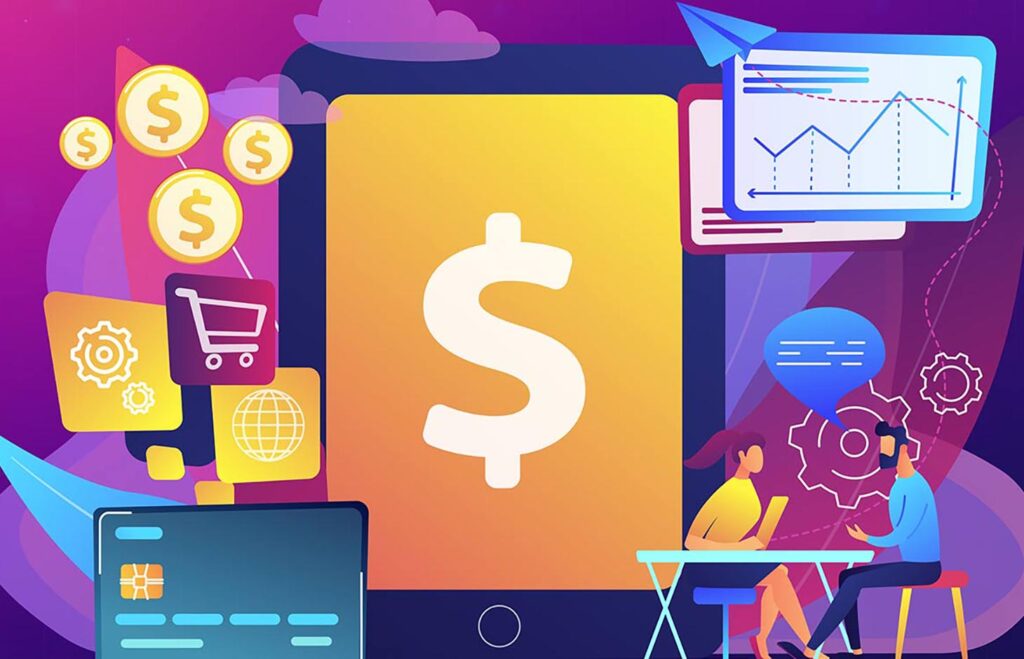The subscription economy has done a lot of good for the world of software: instead of one-time customers that may hold on to antiquated software for years, it’s created a steady influx of monthly revenue.
One downside? It’s created complex billing scenarios that can overwhelm departments, and even hinder scalability when the overwhelm isn’t addressed properly. A good automated billing platform can make collecting payments easier, but only when the tool is a good fit for your business.
Too often, the quest for more efficient subscription management is hindered by the wrong tools. While the right billing software can make recurring billing operations easier, the wrong tool can easily produce the opposite result—complicating your online payments collections processes while costing you significant money.
The best SaaS billing solutions for handling recurring payments come with a set of features that makes managing subscriptions simpler. Knowing what those features are will make it easier for your subscription business to find the tool that will help you collect revenue faster while taking the pressure off your team.
1. A flexible catalog.
Catalog flexibility is a basic but integral part of operating with agility in a competitive marketplace. Unfortunately, not every recurring billing software option on the market is able to compete equally here.
A SaaS business with a flexible catalog benefits from:
- Enhanced go-to-market speed. The average SaaS business can easily have around ten other companies offering ostensibly the same product as them. In such a crowded marketplace, every advantage helps. A good subscription billing platform offering catalog flexibility will allow you to update your catalog instantly, without the costly, time-consuming maintenance. This means that instead of spending time and money on complicated workarounds, billing team members can update your offerings in a matter of minutes. Not only does this allow you to turn on a dime in response to competitors but it also makes it easier to lead the way with new products or features when the time is right.
- Flexible pricing. The best recurring billing software also makes it easier to get competitive with pricing plans. While the majority of your customers may comfortably fit into your pre-ordained pricing, some customers, often larger ones, may require bespoke offerings. While crafting a custom offer with a legacy system can be slow and labor-heavy, a good recurring billing system expedites the process. Nearly 100% of SaaS businesses see good results after increasing flexibility in their pricing plans, making it a strategy worth trying.
- A better customer experience. Businesses without good recurring billing software also often send out complicated bills. For example, instead of sending an invoice that includes only the customer’s monthly fee, they might need to include complicated line items for one-time purchases like physical goods that show up as new subscriptions. While said “subscriptions” are canceled at the end of the month, the resulting confusion can be at best frustrating, and at worst, a source of distrust.
While the bill itself may be accurate, the customer still loses time trying to figure it out. Nearly three out of four consumers report that customer experience informs how they make their buying decisions. If things don’t smoothly with you, it won’t be hard for a customer to move on to one of your competitors.
2. A built-in payment gateway
Payment gateways are a requisite part of doing online business. About 84% of adults in the U.S. have a credit card. Having payment processors built into your subscription management software can be very convenient. However, it’s important to recognize that not all payment gateways are the same.
The right payment gateway for you will:
- Integrate: Integrated payment gateways accept online payments on your own page. Not only does this simplify the payment process for the customer, but it also makes it easier for your payment gateway to communicate with the rest of your subscription management platform, saving your billing staff tedious re-entry work.
- Be transparent: The average payment gateway will charge both flat rates and service fees. While this is normal, transparency is key. Vague line items and other pointless penalties can cost subscription businesses big in the long run.
- Offer low-fee processing options. Low-fee processing options such as ACH transactions can save you big over time. ACH transactions are growing at a record rate because of their low fees. Though only possible on U.S.-based transactions, having ACH processing as an option equips a SaaS company to save money as they automate billing.
3. Powerful integrations with your tech stack
Even the best subscription billing software on the planet won’t be enough to keep your business agile on its own. True technological transformations are comprehensive. Ideally, your subscription billing software will be able to integrate seamlessly with the rest of your tech stack, including your
- ERP or accounting software,
- CRM platform,
- taxation software, and/or
- industry-specific software tools.
A tech stack that is integrated, either natively or through API produces clean data, swifter internal processes, enhanced payment failure recovery processes, and more.
4. Enhanced revenue recognition capabilities for subscription billing
Revenue recognition is notoriously difficult for software companies operating within the subscription model.
Proper revenue recognition is complicated by the fact that monthly recurring revenue (MRR) must be logged on an ongoing basis throughout the month. Even though you might collect customer payments at the beginning of the subscription lifecycle, proper revenue recognition mandates that you can’t be said to have earned it until the service term has been completed.
Properly differing revenue manually is difficult for small companies and virtually impossible for large ones. Though GAAP Standard ASC 606 took effect in 2018 for public entities it remains a source of confusion for many subscription-based businesses.
Improper revenue recognition, either deliberate or accidental, can result in enormous fines. A good subscription management system can help software companies with revenue recognition.
Some require additional paid software. Others include built-in revenue recognition features. Even small things, like ASC 606-compliant terminology, can make accurate revenue recognition easier.
5. Robust analytics for your subscription billing
Finally, your subscription billing platform can also vastly improve your data implementation. By generating in-depth reports, a good subscription billing platform can be an asset for many aspects of your business including:
- Sales: Using historic sales data generated by your subscription billing platform, your team can identify trends, and make accurate forecasts for the future.
- Marketing: Your billing platform can also generate granular reports on who is using your product and how. What sort of businesses get the most out of your product? What sort of features do they like? Which subscription bundles do they prefer? By finding out what your customers like, marketing can make custom-tailored campaigns that appeal to people who are most likely to benefit from your product.
- Customer success: Subscription billing platform-generated analytics can also help your customer success team by generating reports that indicate customer churn risk factors. For example, in viewing a report from a churned customer, your CS team might find that customers often leave if they haven’t realized product benefits after X amount of time. Knowing this, CS can intervene before red flags progress into churn.
The best SaaS billing solutions: An important link in the chain
As the tech writer Stewart Brand said, “Once a new technology rolls over you, if you aren’t the steamroller, you’re the road.” Technological revolutions were once viewed as a competitive edge. Now they are a requisite part of scalability and agility in the modern fast-paced business world.
For companies operating within the subscription niche, a well-chosen automated billing platform is vital, saving time, money, and resources. Stax Bill provides customers with a comprehensive collection of all the features described in this article. With the right tools, your billing platform can be a vital piece of technology with benefits that are felt across all your departments.
FAQs about SaaS Billing Solution
Q: What is a SaaS billing solution?
A SaaS or software-as-a-service billing solution is an automated platform designed to handle regular billing situations and manage payments. It significantly aids businesses that operate on a subscription-based model, making the collection of monthly revenue easier and more efficient.
Q: What are the features to look for in a SaaS billing solution?
The best SaaS billing solutions should include features like catalog flexibility, built-in payment gateways, integrations with your tech stack, enhanced revenue recognition capabilities, and comprehensive data implementation.
Q: What do you mean by ‘catalog flexibility’ in a SaaS billing solution?
Catalog flexibility in a SaaS billing solution refers to the platform’s capability to easily update your catalog without the need for costly and time-consuming maintenance. This feature enables efficient offering updates in response to market trends and new products, and it assists in providing competitive and flexible pricing plans.
Q: Why are integrated payment gateways important in a SaaS billing solution?
Integrated payment gateways simplify the payment process for customers and allow smoother communication with your subscription management platform, reducing the need for manual data entry. Some platforms even offer low-fee processing options, which can lead to significant savings over time.
Q: How does a SaaS billing solution contribute to improved revenue recognition?
Proper revenue recognition is often challenging for subscription-based businesses. A good SaaS billing solution can assist with this by providing either built-in revenue recognition features or compatibility with additional software, including the use of ASC 606-compliant terminology.
Q: How can a SaaS billing solution help with a business’s data implementation?
A competent subscription billing platform can generate in-depth reports to aid various aspects of your business. It can provide historical sales data for trend analysis, customer usage reports for targeted marketing strategies, and customer churn risk factors for proactive customer success interventions.
Q: What role does a SaaS billing solution play in maintaining competitiveness in the subscription economy?
A good SaaS billing solution can help maintain agility amid market fluctuations and competition. It can save time, money, and resources, ultimately enhancing scalability and competitive positioning. The right tools can streamline catalog updates, pricing plan modifications, and payment process flows, delivering a better customer experience.
Q: What are the benefits of having good subscription management software?
Apart from easing the handling of recurring payments, a good subscription management software can improve go-to-market speed, offer flexible pricing, enhance revenue recognition, and provide meaningful data for sales, marketing, and customer retention. Furthermore, it can significantly enhance the customer experience by simplifying bills and payment procedures.








